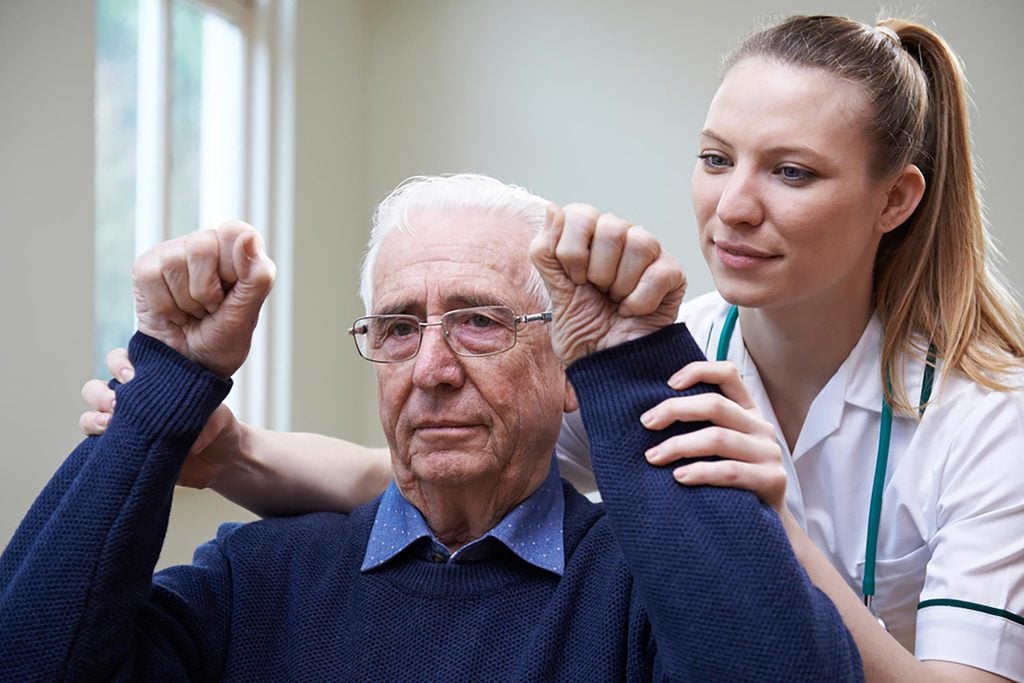If You’re at Risk for a Stroke, This Acronym Could Save Your Life
Updated: Oct. 06, 2017
If you or a loved one exhibits any of these signs, act FAST.

In the event of a stroke, taking action as quickly as possible could be the key to preventing lasting damage. Doctors claim that a matter of hours often makes a difference in whether or not a patient receives life-saving care (it’s one of several medical facts doctors believe everyone should know). Since strokes are so time-sensitive, it’s important to act immediately. But how will you know when a 911 call is in order?
The American Stroke Association has developed a convenient, easy-to-remember acronym that represents the three major stroke symptoms. The acronym is FAST, a memorable word that stresses the importance of urgency and rapid action. If you or anyone you know is at risk of a stroke, these simple four letters, F.A.S.T, should be committed to memory. The first three letters describe major stroke symptoms, while the fourth tells you what to do next if someone exhibits any of those symptoms. (Of course, these signs, though the most telling, aren’t the only symptoms of a stroke. There are many others that are easy to dismiss—but dismissing them could be deadly.)
F is for Face drooping. If one side of the person’s face looks like it’s sagging, or feels numb, this is a common sign of a stroke. Ask the person to smile. If the smile looks lopsided, this is a common indicator that something is wrong.
A is for Arm weakness. In the event of a stroke, one arm will likely feel numb or weak. If the person can’t raise both of his or her arms, or if one arm doesn’t stay up and floats back downward, that’s a major warning sign.
S is for Speech difficulty. Slurred speech is one of the most common signs of a stroke. Ask the person to repeat back a simple sentence. If they have trouble speaking, or are hard to understand, take action.
T is for Time to call 911. If the person shows any one of these symptoms, even if the symptoms go away shortly after, dial 911. Try to remember the approximate time that the symptoms began, since the emergency personnel will most likely ask.
FAST actually isn’t the only mnemonic that can warn of a stroke. There’s a very similar, even simpler mnemonic: S.T.R., the first three letters of “stroke.” The three letters represent basic actions that you should ask a suspected stroke victim to perform: S for smile, T for talk, and R for raise both arms. If they have difficulty doing any of those things, reach for the phone. Here are some more mnemonic devices that could save you in a life-threatening situation.
If you think you could be at risk of stroke, take a look at our list of simple habits that reduce your risk.
[Sources: American Stroke Association, Berkeley Wellness]


















